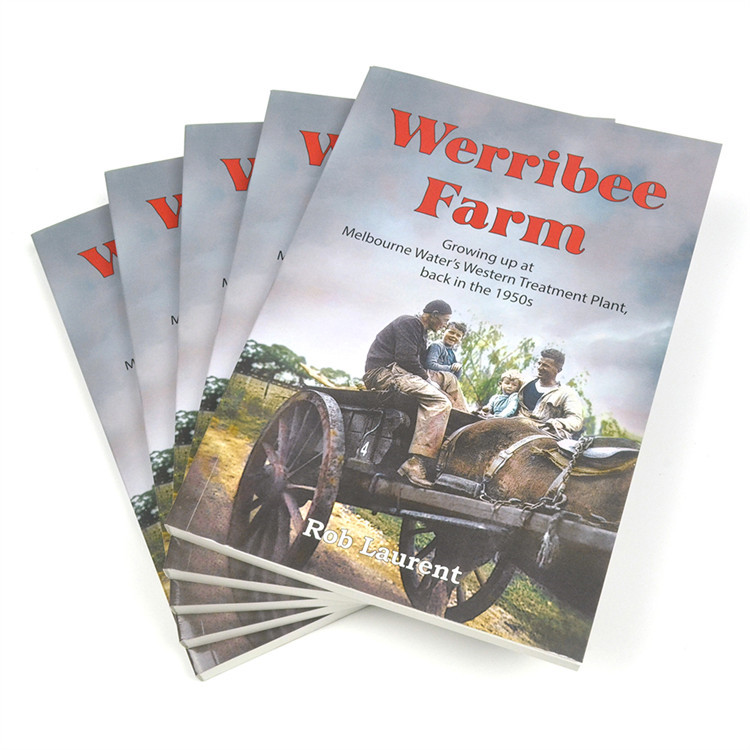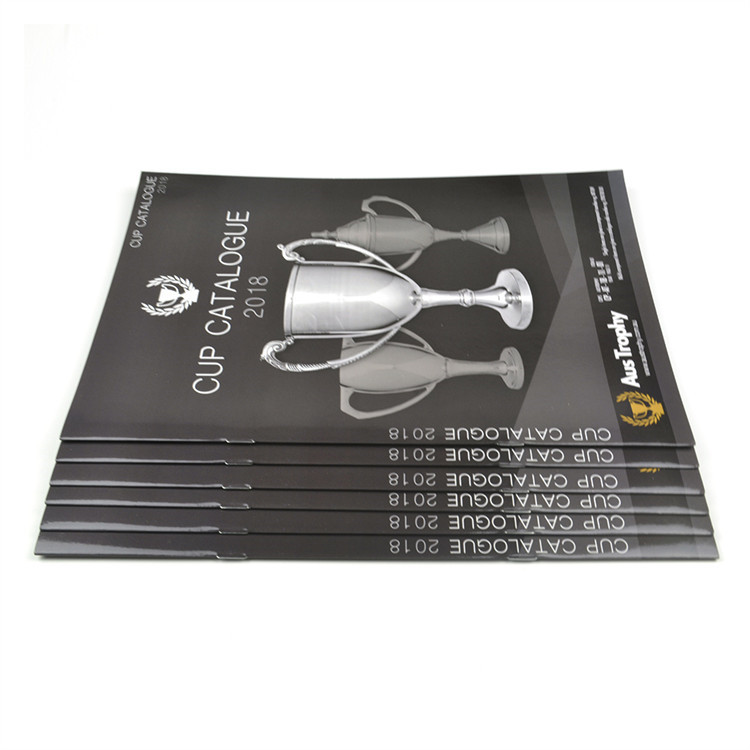Printing is a complex process, and one of the most important decisions to make in that process is how to bind the book. Two popular binding techniques are perfect binding and saddle stitching.
This article provides an overview of each method, outlining their advantages and when they should be used in printing projects. Perfect binding is best for larger books with more pages. While saddle stitching is better suited for smaller books with fewer than 64 pages. Read on to learn more about the differences between these two binding methods and when each should be used in printing projects.
What is a perfect binding?

Perfect binding is a type of book binding that uses adhesive to bind pages together. It is also known as adhesive binding or soft cover binding and is the most common form of book binding today. This method produces books with a smooth spine and edge, as the pages are glued directly to the cover without any visible stitching. The cover can be printed on either card stock or paper, depending on the desired look. This binding way usually used in softcover book printing.
It's important to note that perfect bindings are not recommended for shorter books with fewer than 48 pages. In this case, saddle stitching would be more effective and cost-efficient. Saddle stitching involves folding the pages in half and stapling them along the spine, which works better for smaller publications. Because it keeps everything secure without needing any additional adhesives or materials.
Perfect Binding is an ideal choice for larger books that require frequent updates. Or feature full-bleed images throughout their pages. Such as textbooks, reference guides, cookbooks, and more!
Advantages of perfect binding
Perfect binding is a cost-effective way to bind larger page counts into one book. It allows for printing of more pages with fewer materials, making it an ideal choice for books with many pages. Perfect binding also allows for quick and easy revisions to be made. Which can be especially helpful if the book requires frequent updates.
Books created through perfect binding will lay flat when opened. Allowing readers to have an easier time reading without having to hold the book in awkward positions or use an extra hand to keep the pages open. Additionally, perfect binding offers a wide range of cover options including paper and hardcover covers. That can provide more protection for content inside the book. With this option, books can not only look professional but feel professional as well.
Finally, perfect binding is flexible and durable enough to withstand wear and tear over time better than saddle stitching. This makes it a great choice for books that are expected to last a long period of time or be read multiple times by different people. Therefore, itŌĆÖs important to consider which type of book binding is best suited for your needs before making any decisions about printing your project.
What is saddle stitching?

Saddle stitching, also know as staple book binding, is a popular binding technique used to bind books of up to 64 pages. It utilizes thin, strong wire staples that are inserted through the spine of the book in equal numbers on both sides. This type of binding is an economical choice for smaller books as it provides flexibility for easy revisions and updates.
Unlike perfect binding, which binds single pages together with adhesive. Saddle stitching produces a stronger bond since it joins all pages at once rather than one page at a time. This method also gives publications an aesthetically pleasing look due to its neat lines and evenness.
The process of saddle stitching can be accomplished either manually or through automation depending on the scale and complexity of the project. Manual saddle stitching requires more effort. But provides greater control over how tight the staples are placed along the spine and in what order they should go in. Automated machines can produce faster results with more uniformity. But there may be less control over individual items when dealing with large print runs.
To sum up, saddle stitching is an efficient way to bind books. While still providing quality and durability without breaking the bank. The clean lines give printed materials an attractive finish. That can be further tailored based on manual or automated methods. It depends on your preferences and budget constraints.
Advantages of saddle stitching
Saddle stitching is a highly sought-after bookbinding technique for projects with fewer than 64 pages. It is a cost-effective way to bind pages together, and the process can be completed in either a manual or automated fashion. Not only does it provide an economical solution for your binding needs. But it also creates a strong bond between the content and the cover of the book.
When compared to perfect binding, saddle stitching offers several advantages both cost and time savings. The process requires less material and takes much less time than perfect binding methods. Making it ideal for smaller projects that donŌĆÖt require perfect bindings. Additionally, this type of book binding provides a more aesthetically pleasing finish. As there is no exposed glue on the spine - resulting in an attractive yet professional look that readers will appreciate!
Furthermore, anyone with basic knowledge can complete saddle stitching without any special tools or skills required. Making it easy to achieve impressive results without breaking your budget. This makes saddle stitching perfect for those looking for an affordable option. Or just something quick and simple for their print jobs.
Overall, saddle stitching offers an efficient way to bind books at an unbeatable price point. While still providing exceptional quality results that wonŌĆÖt sacrifice durability or aesthetic appeal! Whether you need something quick and affordable or just want something that looks great for a smaller project. Saddle stitching is sure to meet your needs!
When to use perfect binding vs saddle stitching in printing?
When it comes to book binding, the size and longevity of your project should be taken into account. Perfect binding is a great choice for books with more than 48 pages, like catalogue printing. As it is more durable and allows for frequent revisions. This type of binding also lays flat when opened which makes it suitable for full-bleed images. On the other hand, saddle stitching is ideal for projects with fewer than 48 pages. As it is a simpler method that requires no special tools or glue. It's an efficient way to bind shorter page counts while still creating an attractive product that won't come apart easily.
For documents where page order cannot be changed, perfect binding may be preferred. Due to its greater durability over saddle stitching, which could break if frequently flipped through. Additionally, perfect binding gives you the opportunity to customize your book with gloss finishes and soft covers. Which will give your end product a more professional look and feel.
When choosing between perfect binding versus saddle stitching. Consider the size and expected use of your document in addition to costs associated with each option. Perfect binding works well for longer documents that need regular updates or full-page images. While saddle stitching can provide cost efficiency for shorter documents where page order does not need to change often. Ultimately, weighing all these factors will help you make the best decision on how to bind your book or document in print form!